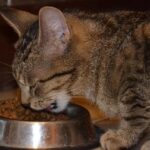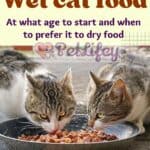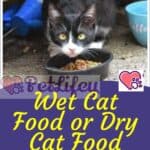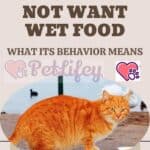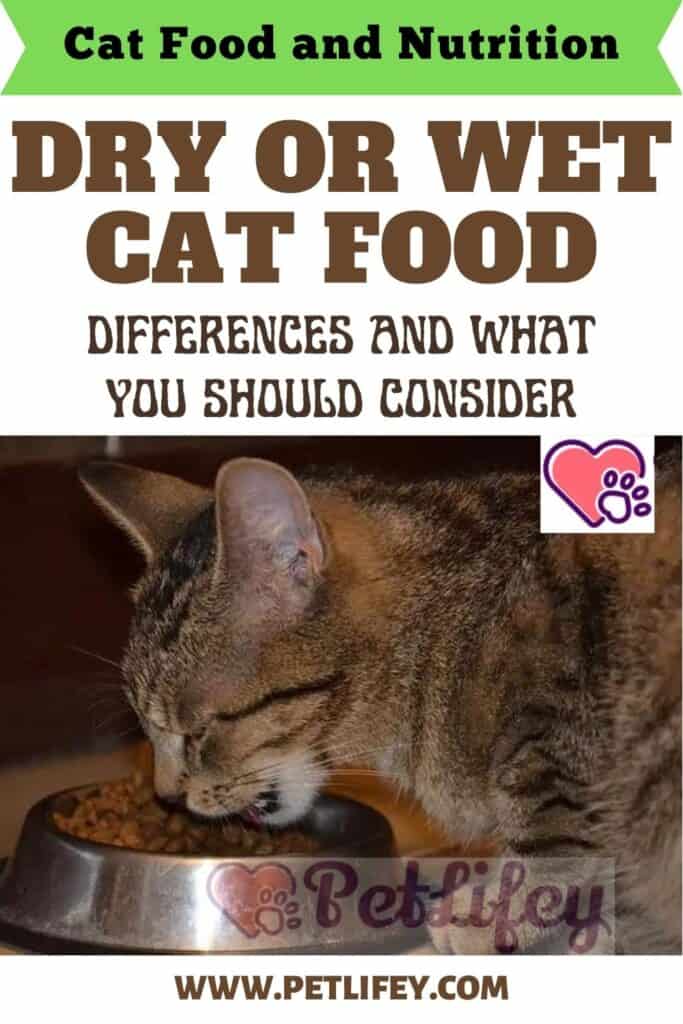
Pet feeding can be of various types, but is dry or wet cat food better? Let’s find out how to choose the correct diet for your cat.
Our pets have a specific diet to respect, and certainly a responsible owner wants the food provided to his / her four-legged friend to be the most suitable for him / her. But when it comes to commercial food, there are so many brands and types that we could really get confused. Usually, for cats and dogs, the main division is between wet and dry food. But which one to choose? The differences between the various types of dry or wet cat food have in fact led owners to wonder which of the two types is the best for their furry friend.
Dry or wet cat food?
In short, a first answer is that cats have very individual eating styles and preferences. First, a cat’s teeth are essentially perfect for a carnivorous diet. But, in any case, cats often have broad food preferences. Because of this, pet owners may find that their felines want a sense of variety on balance.
Usually, there is a series of questions that we ask ourselves that clarify once we notice our cat’s tendency. For example, does our cat prefer the crunchy texture of dry food? Then dry food can be the best cat food for our feline.
What if, on the other hand, our cat likes the consistency of semi-moist and moist food? In general, we offer your cat this type of food. After all, this type of diet also provides good hydration. If, on the other hand, the cat prefers a stronger smelling food, we could heat the wet food or dry food with a little water in the microwave. To be sure, the stronger the food smells, the more interested the cat will be in eating its meal.
Another aspect to take into account can be our cat’s dental hygiene. If your cat’s teeth or gums are sensitive, in fact, we may find that wet food is more pleasant for the cat. In general, however, we offer various tastes and textures to our cat, to let him discover his opinion on dry or wet cat food .
However, there are a number of factors that predetermine a cat’s interest in wet or dry food. These are the smell, texture, taste, and eating habits learned. We also take these factors into account.
What is the best food?
There is really no type of food (dry or wet) for cats that is the best of the two. If a cat is eating all the nutrients that are appropriate for their health, in general, there is no wrong cat food.
Cats prefer food served at body or room temperature over colder foods. For this reason, we can reheat wet or dry food with a little water in the microwave before serving. But if, on the other hand, our cat prefers cold food, so be it.
A cat’s preference really comes down to its independent feline nature. In particular, some cats simply choose dry food for good. While others, for one thing, prefer their moistened cat food, rather others, on the whole, prefer it from a can. It’s all about the individuality of the cat.
Unless a cat has sensitive gums or dental problems, dry cat food is soft enough to chew without problems. To put it differently, dry cat food actually offers teeth cleaning benefits. In general, the texture of dry cat food is still soft enough to chew.
If a dietary change is needed for my cat, you shouldn’t make a sudden change, but definitely introduce new foods in 3-5 days. In this case, it is better to offer a slightly smaller amount of food than intended. With this in mind, the cat can obviously adapt and have no problems with overindulgence.
The pros and cons of dry or wet food
As always, it is best to consult a veterinarian to find out whether dry or wet food is best for the cat. Nutritious cat food is significantly available in a wide range of products. To begin with, a feline’s diet responds to a cat’s preferences, taking into account her age, lifestyle and health.
Semi-moist food, on balance, contains 16-25% protein, 5-10% fat, 25-35% carbohydrates and 25-34% water. Overall, canned wet cat food contains 10-20% protein, 2-10% fat and 72 – 78% water. Dry cat food usually contains 28-36% protein, 8-22% fat and less than 12% water.
High-quality semi-moist foods are particularly palatable, easy to use, and overall, they can also be stored without refrigeration. Canned wet foods are definitely great for pet owners who effortlessly want their cat to have variety. Others prefer dry cat food because it is cheaper, cheaper and, in any case, easier to store.
Corn syrup keeps food semi-moist and prevents it from drying out. On the downside, these ingredients can also increase thirst in cats. Overall, canned wet food, on the other hand, helps cats develop strong bones and muscles. Another key positive about dry cat food is that depending on the type and brand, it can be beneficial for a cat’s dental hygiene.
As can be easily seen, semi-moist cat food is generally more expensive than canned wet cat food and dry cat food. Canned wet cat food can often be more expensive, but at the same time, canning specifically helps preserve food indefinitely. Dry cat food can be handled freely, that is, pet parents can leave the food open. Dry diets mainly contain 8 to 10 percent moisture. In other words, dry cat food is more energy-dense!
Semi-moist foods are significantly affordable. Especially for travel, as they come in individual portions. Of note, canned foods have the same calories as 1/3 cup of dry cat food. Plus, canned foods keep cats better hydrated. Of course, some cats prefer dry, crunchy cat foods over soft ones. Overall, palatability is influenced by taste and smell. To put it another way, how the cat feels food in its mouth.
Foods by cost
Although there is semi-moist, canned, and dry cat food, to be safe, cat food also has three categories. In fact, we have super premium, premium and low cost cat food. Of course, cat food, regardless of whether it is wet or dry, should be specifically based on providing a complete and balanced diet.
Super premium cat food is significantly higher in nutrient density and digestibility than other cat foods. On the other hand, premium cat food isn’t that rich in nutrients. For this reason, the cat must eat more of this food to get the same calories. Finally, cheap cat food uses the cheapest ingredients.
Super premium cat food is more expensive due to the higher quality ingredients. Premium is a cheaper choice than super premium cat food. And of course, cheap food is the cheapest category of cat food.
A high fat content makes the taste of super premium cat foods more palatable. In general, it is best to use premium cat food from reputable manufacturers, which we should test by doing various tests. Overall, we always try to ensure consistent quality and balanced nutrition. In fact, cheap cat food is not as tasty or digestible as the other two types.
The nutrient density of the super premium food not only ensures that the cat doesn’t eat as much in volume, but also ensures that they always get the same nutrition. With premium food, owners choose quality over quantity to significantly ensure their cat is receiving the best possible nutrition. In the case of cheap food, it is important to realize that a cat may need to eat more food in this range to get adequate nutrition, on balance. Not very cheap actually.
In fact, a cat may need to eat more cheap cat food to get adequate nutrition. Super premium food could therefore be cheaper in the end in relation to quantity needed / price. For the premium diet, the average cat in general is fine with this diet. Instead, there is low digestibility in cheap cat food. Because of this, the amount of feces in the litter box increases.
Super premium cat food is normally available in specialty stores, veterinary clinics, or some grocery stores. Generally, premium is sold in grocery stores, large pet stores, and department stores. Usually, cheap cat food is sold in the grocery store. It is also known as the “store brand”.
Tips for dry or wet cat food
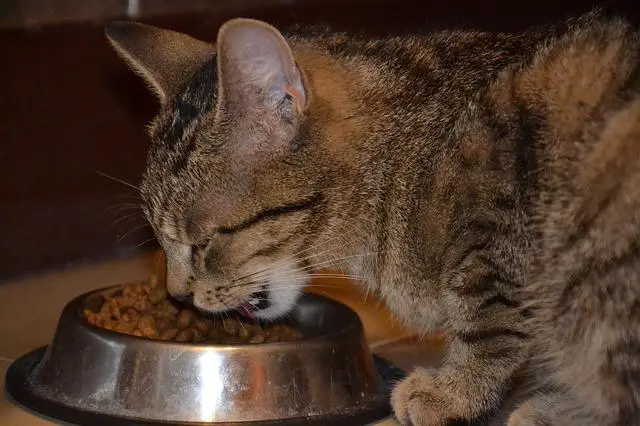
We satisfy the factors that stimulate the cat: in essence, the sense of smell, texture and taste decide whether a cat will specifically eat the food.
Doesn’t the food say “Completed” or “Balanced”? We select a cat food that briefly states, which includes a complete and balanced feline diet.
Let’s make sure our cat’s diet contains these six nutrients:
- Water: The most vital nutrient, water lubricates the tissues and distributes electrolytes.
- Proteins: In general, proteins keep bones, blood, tissues and the immune system in good condition.
- Carbohydrates: Carbohydrates provide energy and aid in the absorption of nutrients.
- Fats: promote the health of the skin and fur. They offer comparatively two and a quarter times the energy available per unit of weight, compared to carbohydrates or proteins.
- Minerals: essential for nerve conduction, muscle contraction, acid-base balance, stability of fluids within cells and, of course, many other bodily functions.
- Vitamins: Small amounts of vitamins are certainly beneficial for a cat’s health. For example, water-soluble B-complex and fat-soluble vitamins A, D, E and K.
We always buy dry or wet food for the tested cat: the tests create complete and balanced diets. These tests determine not only palatability, but also whether the nutrients are vital to a cat .
We Check Manufacturer’s Reputation: A manufacturer’s history in nutritional research is essential. Especially when determining the quality control test of wet or dry cat food.
Diet modification: A cat’s diet can also change altogether. In fact, a cat’s diet is extremely particular and varies especially for their age, health, activity level and living conditions.
We choose food appropriately: Cats get their nourishment, for the most part, by eating food specifically designed for their stage of life. In particular, for example, kittens need more protein, fat and calcium than older felines. For this reason, adult cats can put on weight if they are fed a high calorie cat food.

